In a world where innovation meets practicality, cast aluminum mold waffle plates have emerged as a versatile and durable solution for a variety of applications. These unique kitchenware items, known for their distinctive ridged patterns, have gained popularity not just for their aesthetic appeal but also for their functionality. As we delve into the intricacies of producing these waffle plates, it’s fascinating to explore the impact they have on both commercial and personal domains. Join us as we uncover the fascinating journey of cast aluminum mold waffle plates, from their creation to their diverse uses, and the exciting future that awaits them.
The Basics of Cast Aluminum Mold Waffle Plates
Cast aluminum mold waffle plates are a marvel of modern manufacturing, combining the strength and durability of aluminum with the unique texture of waffle irons. These plates are not just a kitchen staple; they are a testament to the precision and innovation that goes into their creation. Let’s delve into the basics of these versatile cooking tools.
The core of a cast aluminum mold waffle plate lies in its name. The material, aluminum, is chosen for its exceptional heat conductivity, which ensures even cooking and browning of the waffles. The casting process, where the metal is melted and poured into a mold, gives the plate its distinctive shape and structure. This method allows for intricate designs and ensures that each plate is a perfect duplicate of the mold.
The waffle pattern on these plates is not just for aesthetics; it serves a practical purpose. The raised ridges help to trap air, creating the fluffy texture that waffles are famous for. The design of the ridges also allows excess oil to drain away, resulting in lighter, healthier waffles.
When it comes to the mold itself, it is a critical component. The mold is typically made of high-quality aluminum or steel, which can withstand the high temperatures required for the casting process. The mold’s walls must be thick enough to maintain structural integrity but thin enough to allow the aluminum to flow smoothly during casting.
The casting process is a delicate balance of heat, pressure, and timing. The molten aluminum is poured into the mold at a precise temperature, which can vary depending on the specific design and requirements of the waffle plate. As the metal cools, it solidifies, taking the shape of the mold. This is where the magic happens, as the waffle pattern is forever embedded in the aluminum.
Once the casting is complete, the plate undergoes a series of quality checks. Any imperfections in the surface or structural issues are identified and corrected. The edges are trimmed, and the plate is prepared for finishing. This may include polishing to remove any casting burrs and to enhance the plate’s appearance.
The use of cast aluminum mold waffle plates is not limited to household cooking. In commercial settings, these plates are a favorite among professional chefs and bakers. Their consistent performance and ability to produce large quantities of high-quality waffles make them a practical choice for busy kitchens.
In the world of OEM (Original Equipment Manufacturer), the process of creating cast aluminum mold waffle plates is further refined. OEMs work closely with clients to customize the design of the waffle plates to meet specific requirements. This could involve altering the size, shape, or even the waffle pattern to suit the client’s needs. The customization process often starts with a prototype, which is tested and refined until the perfect design is achieved.
One of the key advantages of working with an OEM for cast aluminum mold waffle plates is the level of control and quality that can be achieved. OEMs have the expertise and resources to handle the entire process, from design and prototyping to the final product. This ensures that each plate is not just a functional tool but also a reflection of the brand’s commitment to quality.
In conclusion, the cast aluminum mold waffle plate is a product that embodies the fusion of traditional craftsmanship and modern manufacturing techniques. Its durability, heat conductivity, and ability to be customized make it a versatile and valuable tool for both home and commercial kitchens. Whether you’re a hobbyist baker or a professional chef, the cast aluminum mold waffle plate is sure to enhance your waffle-making experience.
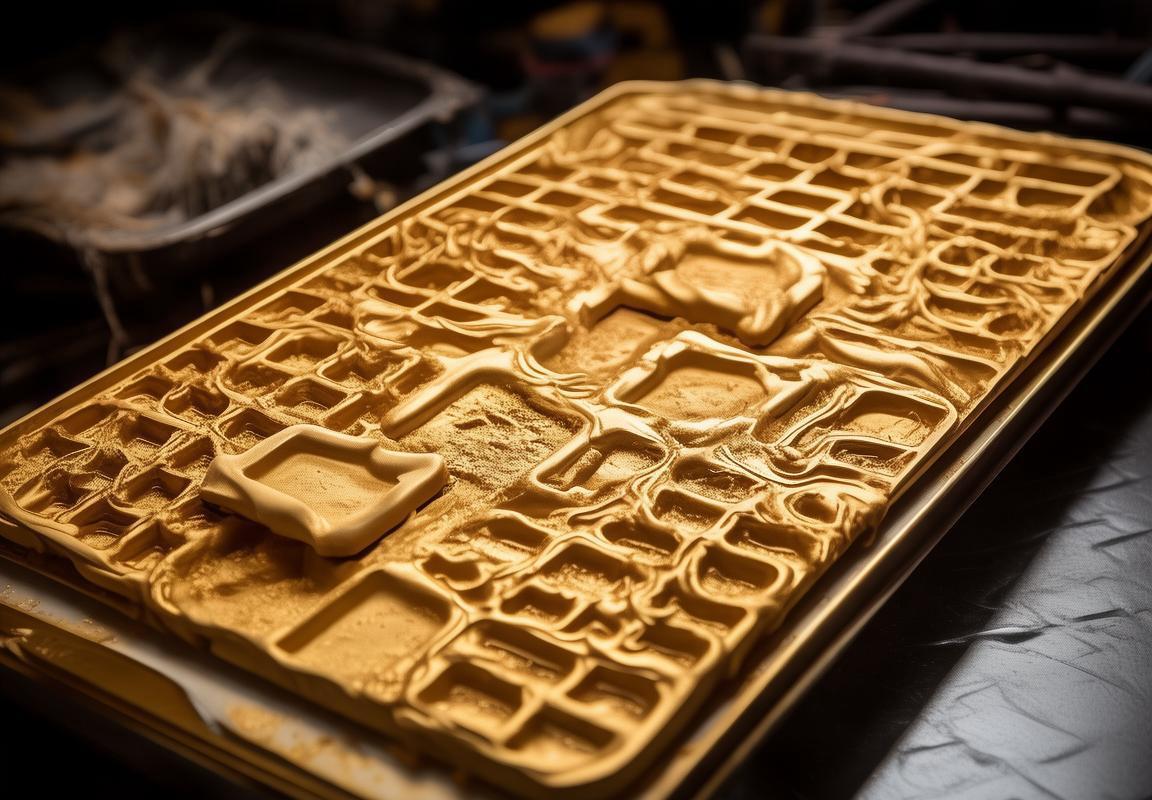
The Advantages of Cast Aluminum Molds
Cast aluminum molds have become a staple in the manufacturing industry, offering a myriad of advantages that make them a preferred choice for many applications. From their exceptional durability to their heat conductivity, let’s delve into the specifics of what makes cast aluminum molds so beneficial.
The inherent strength of aluminum alloy is significantly enhanced when it is cast into a mold, creating a robust structure that can withstand the rigors of high-pressure and high-temperature environments. This strength is crucial in applications where parts need to endure mechanical stress, ensuring a longer lifespan and reduced maintenance needs.
One of the standout features of cast aluminum molds is their excellent thermal conductivity. Aluminum is one of the best heat conductors among metals, which means that molds made from this material can quickly and efficiently dissipate heat. This is particularly important in processes where temperature control is critical, as it helps prevent thermal distortion and maintains the integrity of the finished product.
The cast aluminum process allows for intricate and complex mold designs that can produce parts with high precision. The material can be easily machined and finished to achieve tight tolerances, making it ideal for applications where a high level of detail is required. This precision not only ensures the quality of the end product but also reduces the need for additional finishing operations, saving time and resources.
Compared to other mold materials, cast aluminum is much more cost-effective. It is less expensive than materials like steel or brass, yet it still offers comparable performance. This affordability makes cast aluminum molds a budget-friendly option without compromising on quality or efficiency.
The cast aluminum process is known for its versatility. It can be used to produce molds for a wide range of materials, from metals to plastics and resins. This adaptability allows manufacturers to switch between different production runs with ease, catering to diverse market demands without the need for significant tooling changes.
Aluminum has a natural resistance to corrosion, which is a significant advantage in environments where exposure to moisture or chemicals is common. This resistance extends the lifespan of the mold and reduces the frequency of maintenance and replacement, further contributing to cost savings over time.
Another key advantage of cast aluminum molds is their recyclability. At the end of their service life, aluminum molds can be recycled, which is an environmentally friendly practice. This sustainability aspect is increasingly important to manufacturers looking to minimize their ecological footprint.
The thermal properties of cast aluminum molds also make them suitable for rapid cooling and heating cycles. This rapid thermal exchange capability is beneficial for processes that require quick cooling to set materials or for applications where the mold needs to be reheated rapidly for the next cycle.
In terms of maintenance, cast aluminum molds are relatively easy to clean and maintain. The smooth surface of the mold allows for effective removal of any debris or residue, reducing the risk of contamination and ensuring the quality of the product.
The lightweight nature of aluminum also plays a role in the advantages of cast aluminum molds. A lighter mold is easier to handle, which can improve the ergonomics of the manufacturing process and reduce the physical strain on operators.
Lastly, the cast aluminum process offers a high degree of design flexibility. Molds can be designed with undercuts, intricate details, and complex geometries that may not be possible with other mold materials. This design freedom allows for innovative product development and customization.
In summary, the advantages of cast aluminum molds are numerous, ranging from their exceptional strength and thermal conductivity to their cost-effectiveness, versatility, and environmental benefits. These factors make cast aluminum molds a compelling choice for a wide array of manufacturing applications.
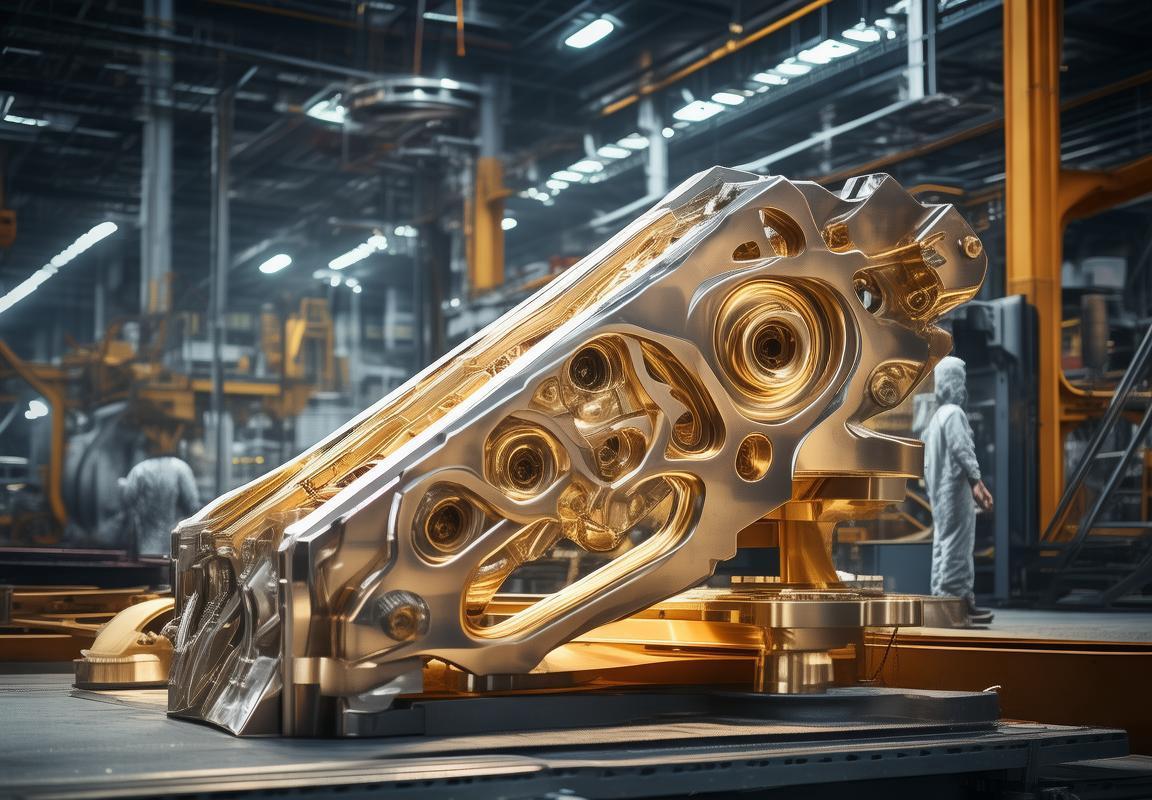
Understanding OEM and Customization
When it comes to manufacturing, the concept of Original Equipment Manufacturer (OEM) and customization plays a pivotal role. OEM refers to a business model where one company produces goods or components that are sold to another company for integration into their final product. Customization, on the other hand, is the process of modifying a product to better suit specific customer requirements. Let’s delve into the intricacies of both concepts.
The essence of OEM lies in collaboration. Companies enter into OEM agreements to leverage the expertise and production capabilities of another firm. This often allows for a more efficient production process, as the OEM specializes in creating specific parts or components. By focusing on what they do best, OEMs can achieve high-quality standards and streamline operations, leading to cost savings for the partner company.
Customization breathes life into standard products by adapting them to unique needs. Whether it’s a slight alteration to fit a particular application or a complete redesign for a specialized market, customization ensures that the end product aligns with the customer’s vision. This tailored approach not only enhances customer satisfaction but can also differentiate a product in a crowded market.
One of the key benefits of OEM is the ability to scale production without the overhead costs associated with starting a new manufacturing line. By working with an established OEM, companies can produce high volumes of custom parts quickly and efficiently. This agility is particularly valuable in industries with fluctuating demand, where inventory management can be a challenge.
Customization also allows for innovation. When a product is designed from the ground up to meet specific requirements, it often incorporates the latest technological advancements. This not only improves the product’s performance but can also open up new markets and opportunities for the company.
In the realm of OEM and customization, communication is paramount. It’s essential for both the OEM and the customer to have a clear understanding of the project scope, timelines, and quality standards. Regular updates and feedback loops ensure that the final product meets expectations and any potential issues are addressed promptly.
The process of OEM and customization is not without its challenges. One significant hurdle is managing intellectual property. When working with an OEM, the customer must trust that their design and specifications will be protected. Confidentiality agreements and non-disclosure clauses are often part of the contract to safeguard proprietary information.
Quality control is another critical aspect. Ensuring that the OEM adheres to the customer’s specifications can be difficult, especially when dealing with complex or highly specialized products. This is why many customers opt for regular inspections and audits to verify the quality of the manufacturing process.
In terms of cost, OEM and customization can be a double-edged sword. While the customer benefits from the economies of scale and the ability to produce a custom product at a competitive price, there can be additional costs associated with design changes, tooling, and the development of prototypes.
The rise of technology has also impacted the OEM and customization landscape. Advanced software and 3D printing have made it easier to design and prototype custom products. This has democratized customization, allowing even smaller businesses to engage in the process without the traditionally high costs.
Ultimately, the success of OEM and customization hinges on the ability to balance cost, quality, and time-to-market. Companies that excel in this area can create a competitive advantage by offering unique, high-quality products that meet the exact needs of their customers. The key is to foster a strong relationship with the OEM, maintain clear communication, and be prepared for the iterative nature of the customization process.
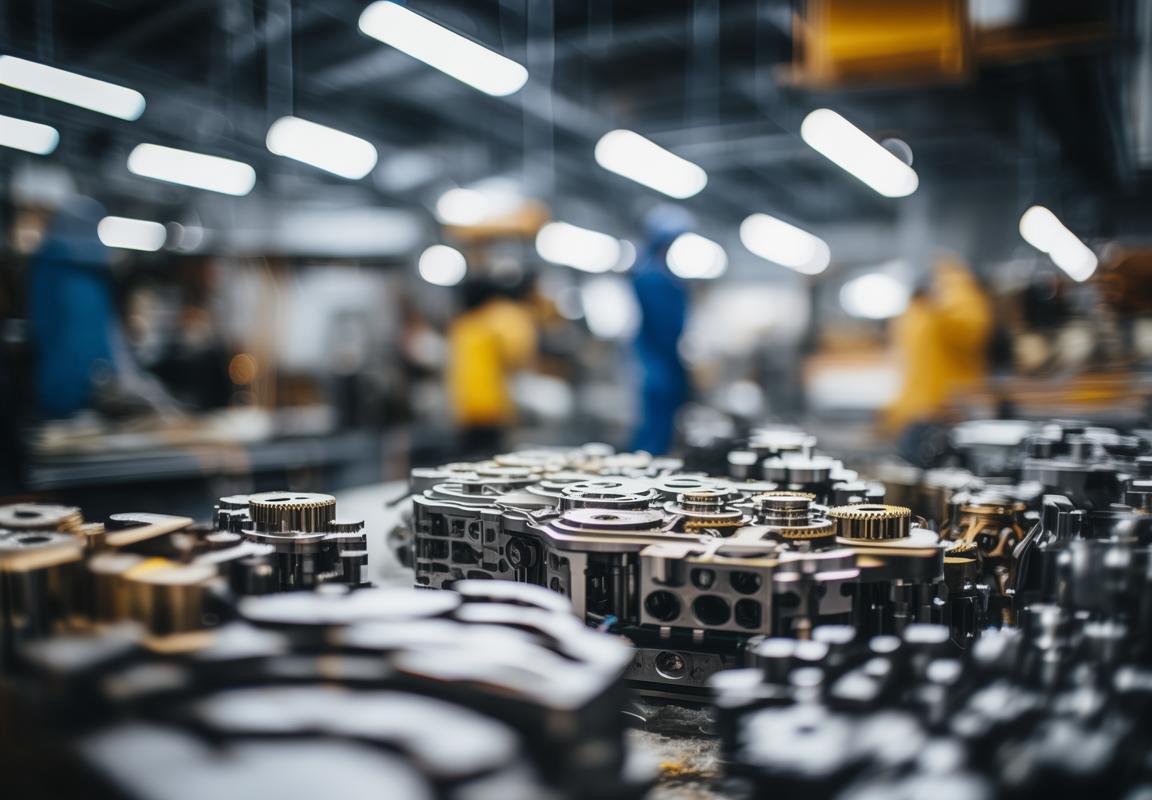
The Process of Producing Waffle Plates with Cast Aluminum Molds
The process of producing waffle plates using cast aluminum molds is a blend of art and engineering, ensuring each plate is not just functional but also durable and aesthetically pleasing. Here’s a detailed look at the steps involved:
-
Design and Conceptualization: The journey begins with the design phase, where engineers and designers collaborate to create the perfect waffle plate. This involves sketching out the pattern, determining the thickness, and considering the overall dimensions. The design must account for the desired waffle size, shape, and even the texture of the ridges.
-
Mold Creation: Once the design is finalized, the next step is to create the mold. This is a critical process as the mold will directly influence the quality of the waffle plates. The mold is typically made from high-quality steel or aluminum, which is then CNC machined to the precise dimensions of the design. The mold is also treated to improve its lifespan and resistance to wear.
-
Preparation of the Casting Material: The material used for casting waffle plates is typically aluminum alloy, chosen for its excellent heat conductivity and durability. The aluminum is melted in a furnace and refined to remove any impurities. The molten aluminum must be of the correct temperature to flow smoothly into the mold without creating defects.
-
Pouring the Aluminum: With the mold ready and the aluminum at the right temperature, the pouring process begins. The molten aluminum is carefully ladled into the mold, ensuring that it fills all the cavities evenly. It’s crucial to pour at the right speed to avoid air bubbles or other imperfections.
-
Curing and Cooling: After the mold is filled, it is left to cure. During this time, the molten aluminum solidifies and takes the shape of the mold. The curing process can last from a few minutes to several hours, depending on the thickness of the plate and the temperature of the aluminum.
-
Removal from the Mold: Once the aluminum has fully cured, the mold is opened, and the waffle plate is carefully removed. This step requires precision to avoid damaging the intricate waffle pattern. The plate is then placed on a cooling rack to ensure it cools evenly and does not warp.
-
Quality Control: Each waffle plate is inspected for any defects such as cracks, bubbles, or uneven thickness. Advanced techniques like X-ray or ultrasonic testing might be used to detect internal defects. Only plates that meet the stringent quality standards are allowed to proceed to the next stage.
-
Finishing Touches: The plates that pass the quality control are then subjected to various finishing processes. This may include sanding to smooth out any rough edges or imperfections left by the mold. Some plates may also be polished, anodized, or painted to enhance their appearance and durability.
-
Packaging: Once the waffle plates are finished, they are packaged according to the customer’s requirements. This could involve protective wrapping, boxing, and labeling with necessary information such as part numbers, batch codes, and manufacturing dates.
-
Shipping: The final step is shipping the waffle plates to the customer. Proper packaging ensures that the plates arrive in perfect condition, ready for their intended use, whether it’s in the foodservice industry, home kitchens, or other applications.
Throughout the entire process, the use of cast aluminum molds offers several advantages, including their ability to produce high-quality, consistent waffle plates with minimal waste. The molds are reusable, which reduces production costs over time, and the durable nature of aluminum ensures that the waffle plates are long-lasting and can withstand the rigors of repeated use.
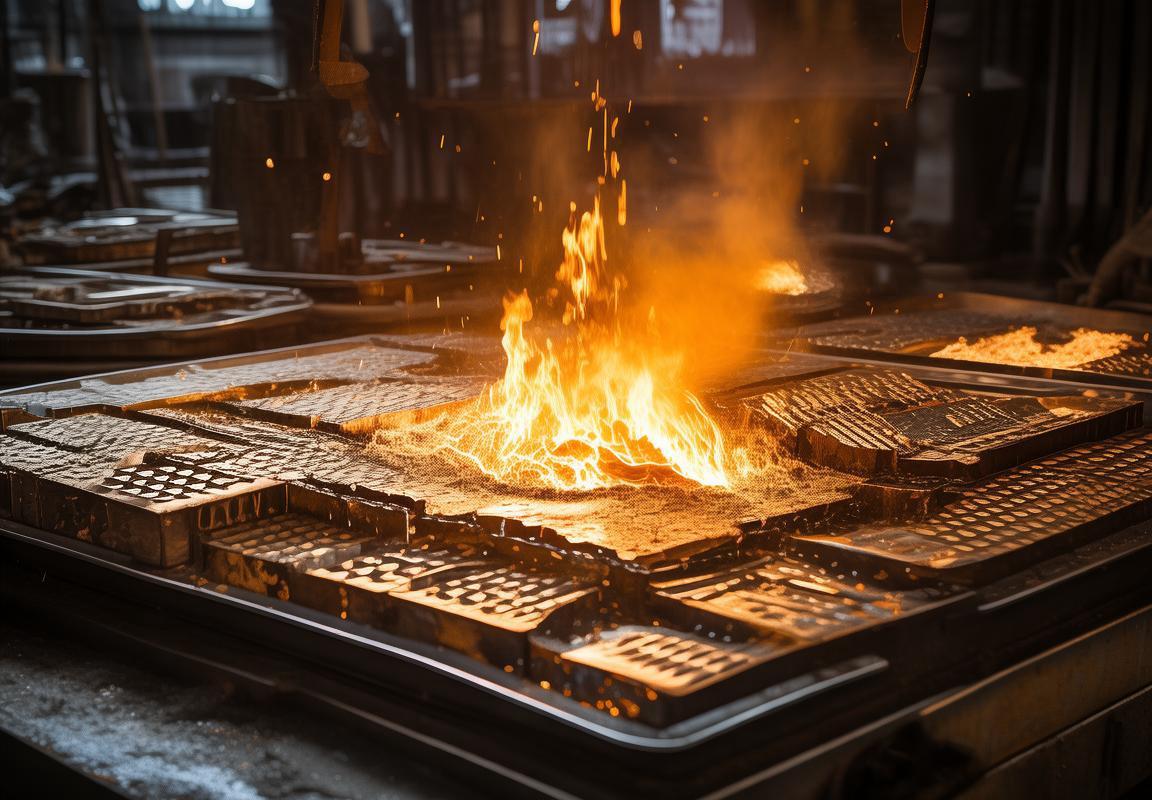
Applications of Cast Aluminum Mold Waffle Plates
Cast aluminum mold waffle plates have become a versatile and sought-after product across various industries. Their unique design, combined with the robustness of cast aluminum, makes them ideal for a wide range of applications. Here’s a closer look at some of the key areas where these waffle plates are making a significant impact:
- Culinary Uses in Professional Kitchens
- Waffle plates are a staple in professional kitchens, where they are used to create a variety of waffle dishes, from classic Belgian waffles to gourmet sweet and savory creations.
- These plates are designed to evenly distribute heat, ensuring that each waffle is cooked to perfection with a crispy texture on the outside and a soft interior.
- Home Kitchen Appliances
- Home cooks appreciate the convenience and versatility of cast aluminum mold waffle plates, which are often found in countertop waffle makers.
- These appliances are perfect for making waffles for breakfast, a fun snack for kids, or even as a delightful dessert option.
- Outdoor Cooking and Picnics
- Cast aluminum mold waffle plates are excellent for outdoor cooking, as they can be used on portable grills or open flame burners.
- They are a favorite among campers and picnickers who enjoy making their own waffles while enjoying nature.
- Food Service Industry
- Restaurants, cafes, and fast-food chains often incorporate waffle plates into their menu offerings, thanks to their ability to create a unique and appealing product.
- The durable construction of these plates ensures they can withstand the rigors of commercial kitchen use, including high temperatures and frequent cleaning.
- Event Catering and Temporary Kitchens
- For events that require a mobile kitchen setup, cast aluminum mold waffle plates are a practical choice.
- They can be easily transported and used in temporary kitchens, providing a consistent waffle-making experience regardless of the venue.
- Educational and Culinary Schools
- Culinary schools and educational institutions often use cast aluminum mold waffle plates in their training programs.
- These plates help students learn the techniques of waffle making and understand the importance of heat control and consistency.
- Gourmet and Artisan Baking
- Gourmet chefs and artisan bakers use these waffle plates to create specialty waffles, often incorporating unique ingredients and flavors.
- The ability to customize the waffle plates allows for creative experimentation with different toppings, fillings, and textures.
- Health and Wellness
- As the demand for healthier food options grows, cast aluminum mold waffle plates have found their way into wellness-focused diets.
- They can be used to make nutritious waffles using whole grains, fruits, and vegetables, providing a healthy breakfast or snack.
- Specialty Coffee Shops and Bakeries
- Specialty coffee shops and bakeries often offer waffles as a complement to their menu, using cast aluminum mold waffle plates to serve up high-quality, freshly made waffles.
- The plates are valued for their ability to produce waffles that can be customized to suit different taste preferences and dietary needs.
- Promotional and Branding Opportunities
- Companies often use cast aluminum mold waffle plates for promotional purposes, branding them with their logo or message.
- This can be particularly effective at trade shows, corporate events, and as part of a product launch, offering a unique and memorable take-home gift.
The versatility of cast aluminum mold waffle plates is undeniable, and their applications continue to expand as new uses are discovered and existing ones refined. Whether for commercial, educational, or recreational purposes, these waffle plates are a staple in many kitchens and dining establishments around the world.
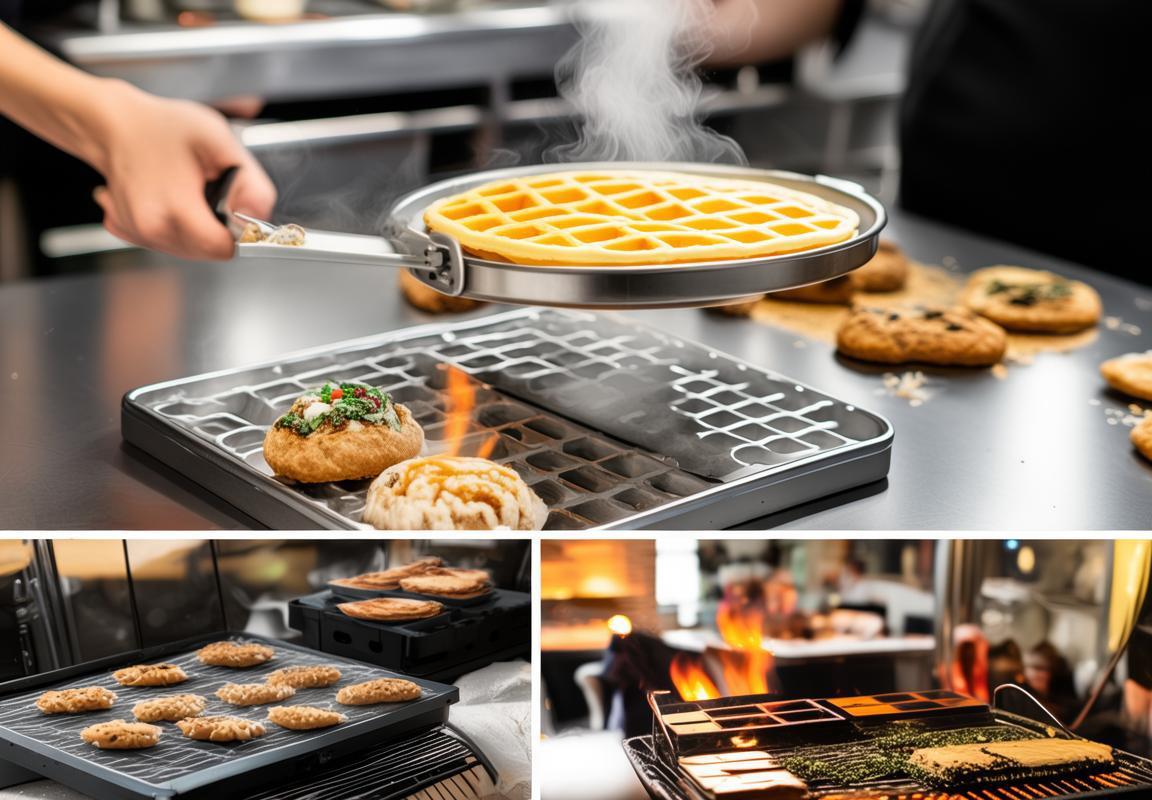
Case Studies and Success Stories
In the world of manufacturing, there are countless stories of companies that have turned challenges into opportunities, and of individuals who have pushed the boundaries of what’s possible. Here are a few case studies and success stories that highlight the triumphs and innovations in various industries.
A local bakery, known for its traditional pastries, faced a problem with their waffle iron. The old iron was not only inefficient but also prone to damage. After consulting with a manufacturer, they decided to invest in a custom cast aluminum mold waffle plate. The new waffle iron, with its precision-crafted plate, not only improved the quality of their waffles but also reduced maintenance costs. The bakery’s sales soared as customers raved about the consistency and taste of the waffles.
A tech startup struggled to find a reliable supplier for their innovative product. They needed a partner who could not only meet their high-quality standards but also understand the nuances of their design. After several rounds of collaboration, the startup found a manufacturer who was willing to go the extra mile. The manufacturer’s expertise in cast aluminum molds allowed them to create a custom part that was both functional and aesthetically pleasing. The partnership led to a successful product launch and a strong market presence.
In the automotive industry, a major car manufacturer was looking to reduce weight in their vehicles without compromising on safety or performance. They turned to a specialized mold maker who suggested using cast aluminum for certain components. The lightweight yet durable cast aluminum parts were a game-changer, helping the manufacturer meet their goals and gain a competitive edge in the market.
A small furniture company was facing a production bottleneck due to the complexity of their designs. They needed a mold that could produce intricate details without losing quality. After thorough research, they discovered a mold maker who excelled in creating cast aluminum molds. The new molds allowed the company to produce their unique designs with ease, significantly increasing their production capacity and sales.
A medical device company was in need of a custom part for a critical component of their product. The part required high precision and was too complex for traditional manufacturing methods. The company found a mold maker who specialized in cast aluminum molds. The custom mold not only met the stringent requirements but also allowed for faster production times, improving the company’s ability to deliver their products to market.
A sports equipment manufacturer was looking to improve the aerodynamics of their latest bike model. They turned to a mold maker who suggested using cast aluminum for the bike’s frame. The lightweight and strong cast aluminum frame not only enhanced the bike’s performance but also set a new standard in the industry.
In the food industry, a snack manufacturer was facing issues with their existing packaging material. They needed a durable and cost-effective alternative. After consulting with a mold maker, they decided to use cast aluminum molds to create a new packaging design. The innovative packaging not only protected the snacks better but also reduced waste, leading to increased customer satisfaction and environmental benefits.
These case studies and success stories showcase the versatility and effectiveness of cast aluminum molds in a wide range of industries. From small businesses to large corporations, the ability to create custom parts with precision and efficiency has opened doors to new possibilities and advancements. Whether it’s improving product quality, reducing costs, or enhancing performance, the power of cast aluminum molds continues to shape the future of manufacturing.
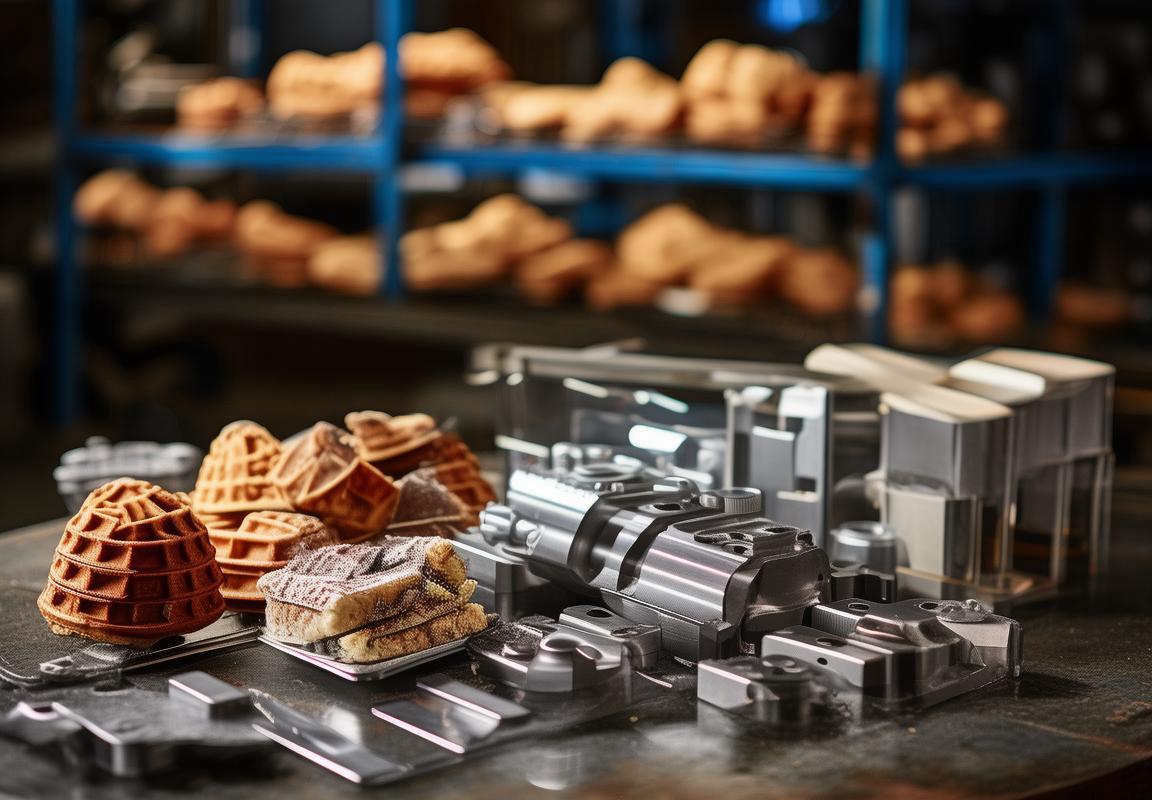
The Future of Cast Aluminum Mold Waffle Plates
In the ever-evolving world of manufacturing, the future of cast aluminum mold waffle plates holds a myriad of possibilities. These versatile and durable plates are not just limited to the kitchen; they are set to revolutionize various industries with their unique features and benefits. Let’s delve into how these waffle plates might shape the future.
The integration of advanced technology in the production process is expected to lead to more precise and efficient manufacturing. Innovations such as 3D printing and CNC machining could allow for intricate designs and complex molds, opening up new avenues for customization and creativity.
Sustainability is a growing concern across all sectors. Cast aluminum mold waffle plates, being recyclable and long-lasting, are poised to become a favorite choice for environmentally conscious manufacturers. This eco-friendly approach could not only reduce waste but also lower the carbon footprint of production.
The foodservice industry is always on the lookout for innovative solutions that can improve efficiency and enhance the quality of products. Waffle plates made with cast aluminum molds could offer a better surface for cooking, allowing for even heat distribution and preventing sticking, which is a common issue with traditional waffle irons.
In the realm of outdoor activities, cast aluminum mold waffle plates could find their way into the production of durable and lightweight cookware. These plates could be a game-changer for campers and adventurers, offering a versatile cooking surface that withstands the rigors of outdoor use.
The healthcare sector is also exploring the use of cast aluminum mold waffle plates. Their non-stick and even-heating properties make them ideal for preparing therapeutic foods or for use in hospitals and care facilities where food safety and consistency are paramount.
The culinary world is always in a constant state of evolution, and cast aluminum mold waffle plates could play a significant role in this journey. Chefs are always looking for new techniques and tools to push the boundaries of their craft, and these plates could offer new possibilities for creating unique and visually appealing dishes.
The rise of smart technology in kitchen appliances is inevitable, and cast aluminum mold waffle plates could be at the forefront of this trend. Imagine a waffle iron that not only cooks your waffles to perfection but also connects to your smartphone to provide cooking tips, maintenance reminders, and even recipes.
The automotive industry has also shown interest in lightweight materials that can enhance fuel efficiency and reduce emissions. Cast aluminum mold waffle plates could be adapted to create parts that are both lighter and stronger, contributing to the development of more sustainable vehicles.
The aerospace industry is another sector where lightweight materials are crucial. Cast aluminum mold waffle plates could potentially be used to create components that are both lightweight and robust, thus improving the overall performance and efficiency of aircraft.
The potential for customization is vast, and the future might see a surge in personalized waffle plates. Customers could have their plates designed to match their kitchen decor or even incorporate their initials or special messages.
In the realm of education, cast aluminum mold waffle plates could be a valuable tool for teaching students about food science, design, and engineering. They offer a hands-on learning experience that can inspire the next generation of innovators.
The future of cast aluminum mold waffle plates is indeed bright, with numerous applications across various industries. From kitchen gadgets to high-tech manufacturing, these versatile plates are set to make their mark on the world in ways we might not yet fully anticipate.